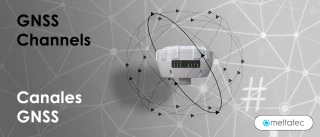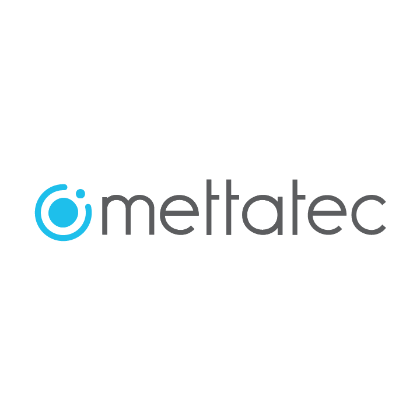

The Importance of Obtaining the NOAA National Geodetic Survey (NGS) Calibration Report for a GNSS Receiver
Introduction
Multi-band GNSS receivers play an essential role in accurately determining positions and obtaining location data in applications such as navigation, surveying and precision agriculture. The precision and reliability of these receivers are critical, and a fundamental element in the search for excellence in their performance is obtaining a Calibration report issued by NOAA’s National Geodetic Survey (NGS).
The Meaning of GNSS Calibration
GNSS Receiver Antenna Calibration is the process of evaluating and adjusting the performance characteristics of an antenna to ensure its precision and accuracy. Given the constant evolution of GNSS technologies and the variability in environmental conditions around the world, calibration carried out by a reliable international organization becomes an essential stage to demonstrate the quality and guarantee the performance of these high-precision equipment.
The Role of the National Geodetic Survey in GNSS Calibration
The National Geodetic Survey (NGS) of the National Oceanic and Atmospheric Administration (NOAA) of the United States is a globally recognized authority in the provision of geodetic and positioning services. The calibration of GPS/GNSS antennas carried out by NGS involves a meticulous and highly precise process that guarantees quality and consistency in the results.

Advantages of Obtaining an NGS Calibration Report
Rigorous Measurement Standards: NGS applies international standards and highly precise calibration methodologies, ensuring that integrated GNSS antennas and receivers meet the most demanding specifications.
Confidence in Device Accuracy: By obtaining an NGS calibration report, GNSS antenna and receiver manufacturers can demonstrate the accuracy and reliability of their products, which is crucial to gaining the trust of customers, investors and strategic partners.
International Comparability: NOAA NGS is recognized globally, meaning that calibration reports issued by this entity are respected in the global GNSS community. This facilitates the comparison and interoperability of GNSS antennas and receivers in different contexts and applications.
The National Geodetic Survey – NGS Calibration Process
The NGS calibration process involves the evaluation of multiple parameters, including antenna gain, phase, and polarization. Specialized facilities and advanced techniques are used to ensure the accuracy of the results. Additionally, detailed information on measurement uncertainty is provided, allowing manufacturers to understand the potential variability in the performance of their antennas.
The calibration process basically consists of:
Locate the average Phase Center of the antenna in reference to the physical dimensions of the GNSS receiver.
Define some spatial corrections to locate the phase center of the GNSS antenna.

Physical Reference Points of a GNSS receiver
In the case of the Mettatec X5R GNSS Receiver, the NGS calibration process used the following points as physical reference points for calibration:
Northing Reference Point (NRP): located on the directions display screen or Human Machine Interface (MMI), and
Antenna Reference Point (ARP): located at the base of the receiver and center of the 5/8´ thread defined as the Bottom of the Antenna Mount (BAM).

The Phase Center:
The Phase Center of an antenna is the non-physical, mathematically best-fitting point that relates the arrival time of incoming electromagnetic signals to the tangible structure of the GNSS antenna.

Antenna calibrations must provide the location of L1 and L2 Phase Centers concerning a physical and external feature of these antennas. To obtain precise coordinates, signal phase advances and delays (calibration values) occurring in the antenna during GNSS data processing must be applied.
For the X5R GNSS Receiver, the results of the NGS Calibration regarding the location of L1 and L2 Phase Centers concerning the distance from the base and the central axis of the receiver can be observed.

The ANTEX File
The ANTEX file, which stands for “ANTenna EXchange format” in English, is a standard file format used to store information about the characteristics of GNSS antennas. These ANTEX files are issued and maintained by the NGS. After calibration, the NGS provides downloadable files containing complete absolute receiver calibrations in ANTEX and ANTINFO formats.

Users can download absolute antenna calibration files in ANTEX and ANTINFO formats from the “Access Calibrations for All Antennas” menu.
Link: https://geodesy.noaa.gov/ANTCAL/

Importance of the ANTEX File:
Precision in GNSS Positioning: By utilizing ANTEX files, GNSS receiver users can more accurately correct signals affected by antenna characteristics and the ionosphere. This contributes to improving precision in position determination.
Compatibility and Interoperability: Since the ANTEX format is an internationally recognized standard, it facilitates compatibility and interoperability among different receivers and GNSS systems from various manufacturers. This ensures consistency and reliability in GNSS measurements globally.
Updates and Maintenance: The NGS can issue updates to ANTEX files to reflect changes in antenna or integrated GNSS receiver characteristics. Users can download updated versions to ensure they have the most recent and accurate information.
The NGS recommends using the ANTEX format to enhance accuracy in GNSS data processing. The NGS employs the ANTEX format in all its GNSS processing software, including OPUS. However, the NGS will also continue supporting the ANTINFO format for users of legacy software.
Our Commitment to the Quality of X5 Multi-Band GNSS Receivers
Obtaining a calibration report from the National Geodetic Survey (NGS) of NOAA is of vital importance for METTATEC as a manufacturer of high-precision GNSS receivers. This achievement not only ensures compliance with international standards but also demonstrates a commitment to quality and excellence in the manufacturing of all our products. Our confidence and reputation in the GNSS industry are strengthened, providing us with a significant competitive advantage in the global GNSS market.
Do you have questions about this article?
Get in touch with METTATEC, and they would be happy to answer any questions you have about pricing, suitability, availability, specs, etc.
Related articles










